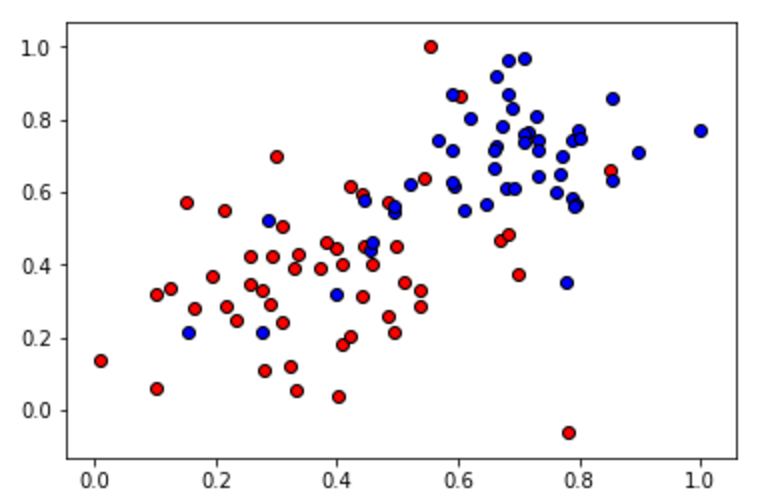10. Quiz: Testing in sklearn
Splitting a dataset into training and testing data is very easy with sklearn. All we need is the command train_test_split. The function takes as inputs X and y, and returns four things:
X_train: The training inputX_test: The testing inputy_train: The training labelsy_test: The testing labels
The call to the function looks as follows:
from sklearn.model_selection import train_test_split
X_train, X_test, y_train, y_test = train_test_split(X, y, test_size = 0.25)The last parameter, test_size is the percentage of the points that we want to use as testing. In the above call, we are using 25% of our points for testing, and 75% for training.
Let's practice! We'll again use the dataset from the previous section:

In the following quiz, use the train_test_split function to split the dataset into training and testing sets. The size of the testing set must be 20% of the total size of the data. Call your training sets X_train and y_train, and your testing sets X_test and y_test.
Click on Test Run to see a visualization of the results, where the training set will be drawn as circles, and the testing set as squares. Then when you're done, click on Submit to check your code!
Start Quiz: